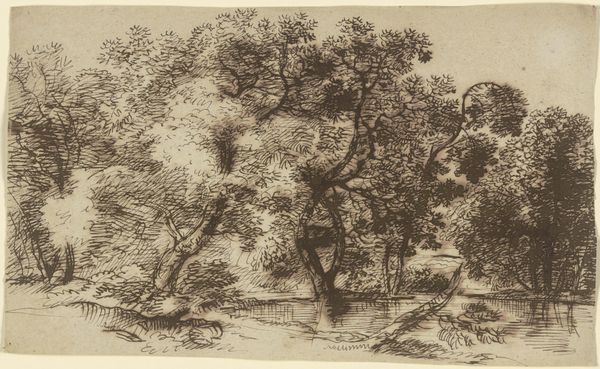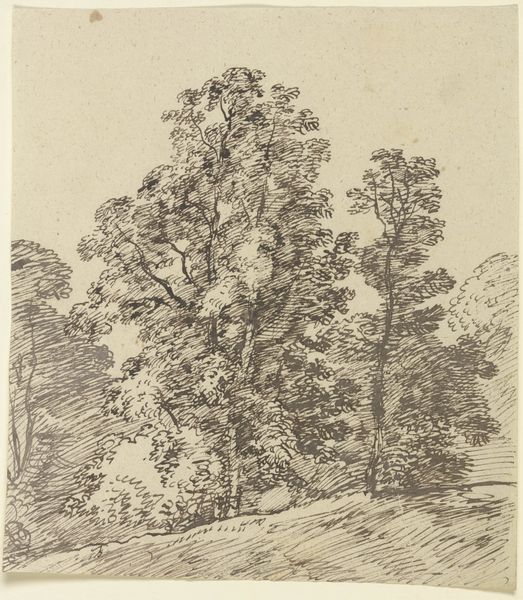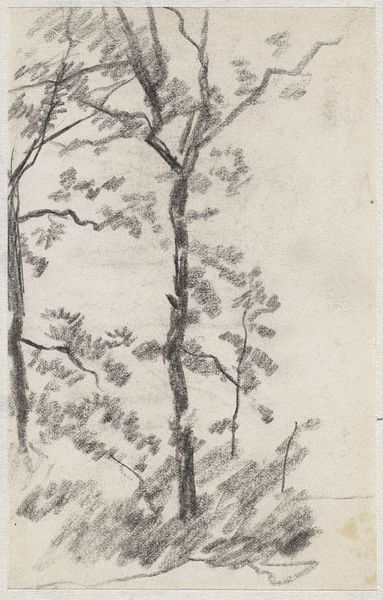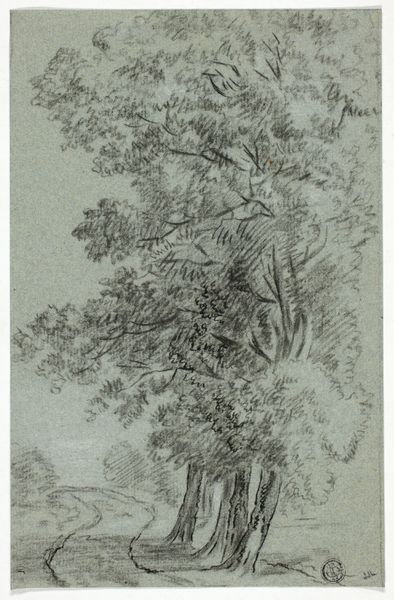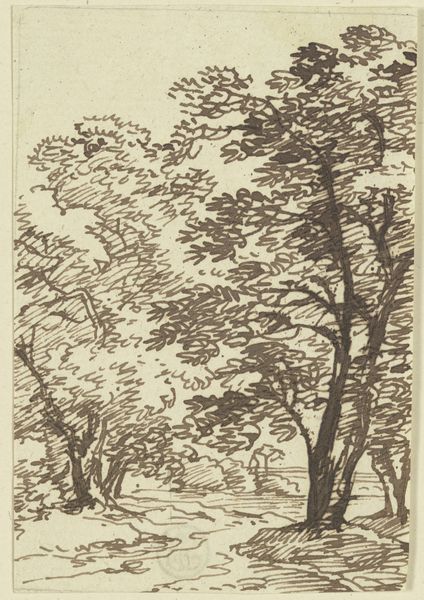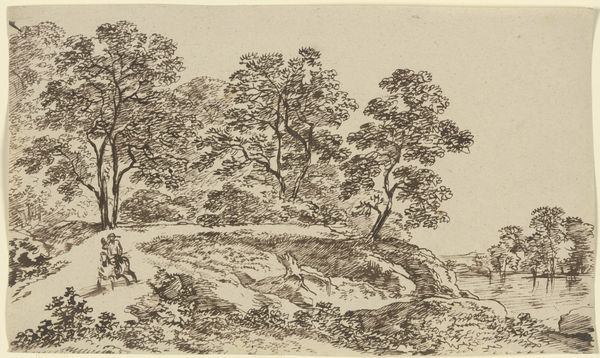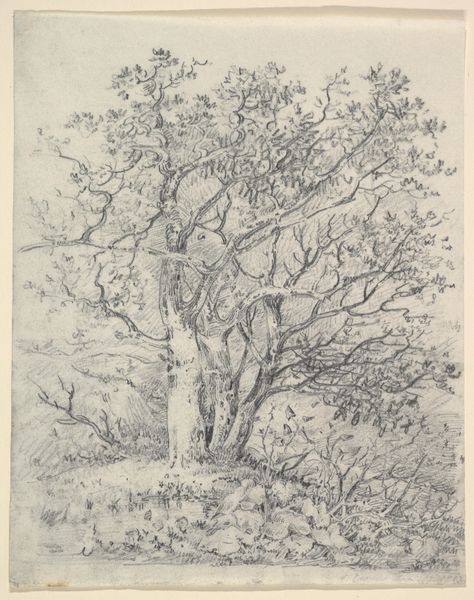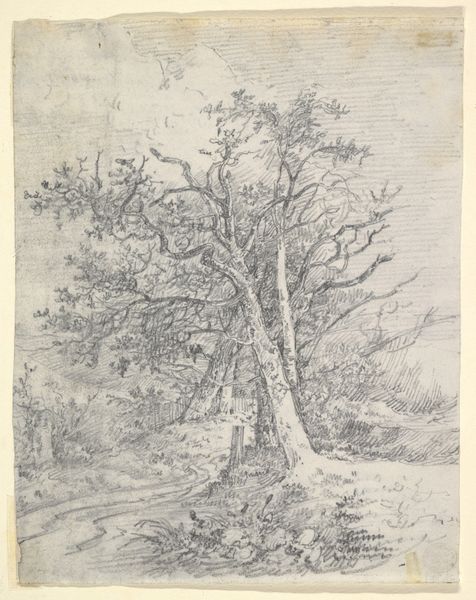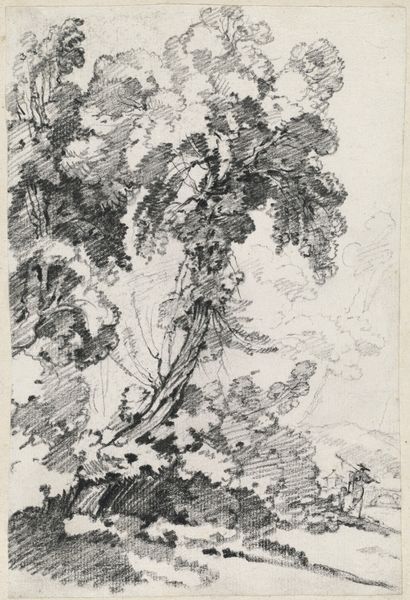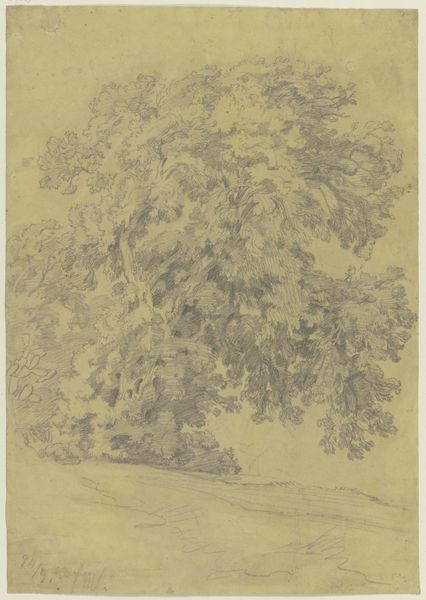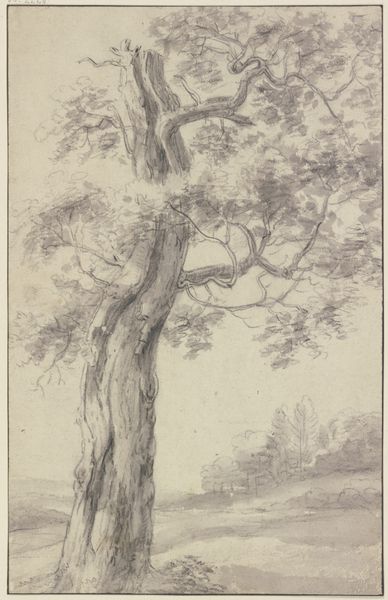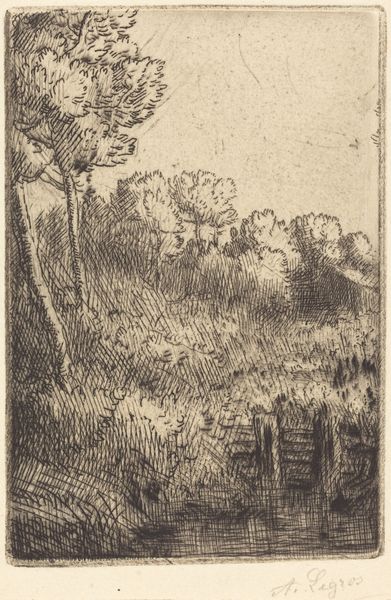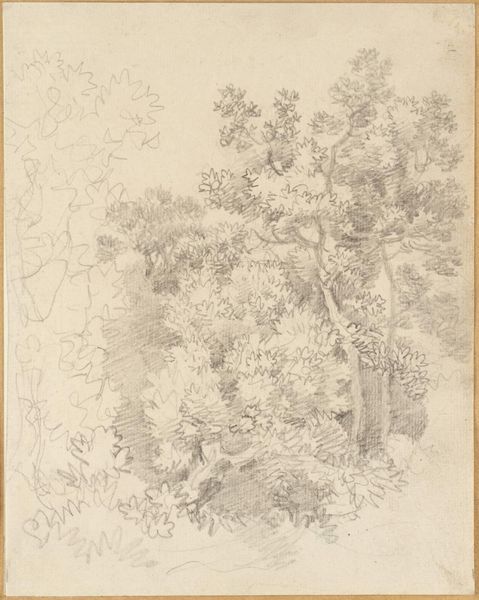
drawing, paper, ink, pen
#
landscape illustration sketch
#
drawing
#
landscape
#
etching
#
paper
#
ink
#
romanticism
#
15_18th-century
#
pen
Copyright: Public Domain
Editor: Here we have "Tree with Undergrowth" by Franz Kobell, likely dating to the late 18th century. It's rendered in pen and ink on paper. There’s an appealing sketch-like quality to it, the details seem built through layered hatching. What strikes you when you look at this drawing? Curator: What’s most apparent is Kobell’s mastery of line. Notice how the density of the hatching defines volume and texture. In the tree's canopy, short, nervous strokes convey the lightness of foliage, while the thicker lines lower down suggest the dense undergrowth. How does the structure of the tree itself strike you? Editor: I see what you mean. The density definitely guides the eye. I am intrigued by the tree’s reaching branches. They fill up space while still allowing light through, which maybe it is intended to give a sense of natural growth, but there's an incompleteness, a raw quality to the execution. Do you think this contributes to the emotional impact? Curator: Precisely. The 'raw quality' you observed is an essential part of its construction. Observe how the linear forms construct a lattice – light and dark are carefully balanced. The structure, as I am interpreting it, explores this contrast as an aesthetic. The placement of the lines makes use of the white space of the paper as a value. It achieves this balance through the careful placement of line to draw out this balance. Do you follow? Editor: Yes, that makes sense. It’s like he’s composing with emptiness as much as with ink. Thinking about it structurally highlights that balance, making it a striking image. Thank you. Curator: Indeed, it exemplifies how a rigorous focus on the formal elements can illuminate a work’s aesthetic power and impact. Thank you for your insight.
Comments
No comments
Be the first to comment and join the conversation on the ultimate creative platform.
